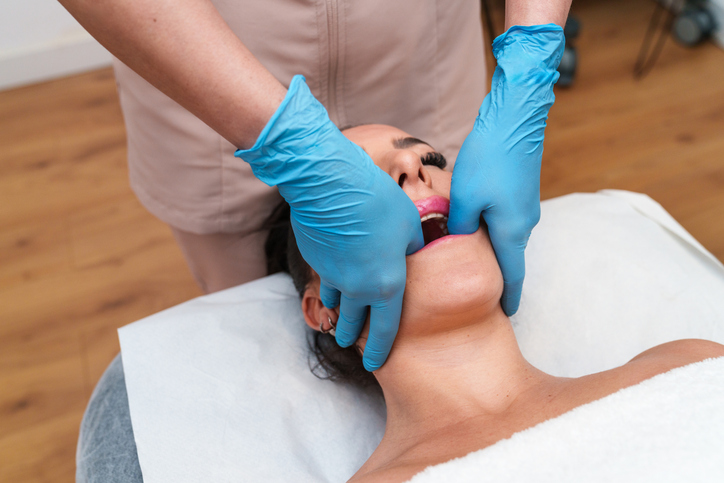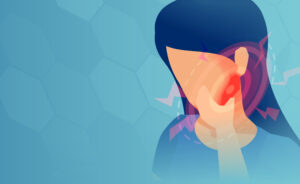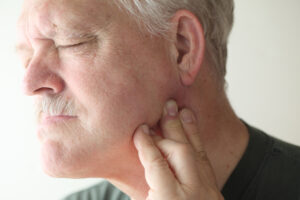Temporomandibular Joint Disorders
Overcome Temporomandibular Joint Disorders with Physical Therapy
Temporomandibular joint (TMJ) disorders, or TMD, can cause a range of symptoms that may interfere with your everyday life. From jaw pain and headaches to difficulty chewing and clicking sounds when opening your mouth, TMD can be quite troublesome. However, temporomandibular joint physical therapy can effectively treat and manage these symptoms.
Physical therapists are trained to evaluate your jaw movements, posture, and muscle strength to pinpoint the underlying issues contributing to your TMD. This allows them to create a personalized TMJ physical therapy plan tailored to your specific needs. This plan may incorporate exercises to increase jaw mobility, manual therapy techniques to ease pain and improve joint function, and education on correct posture and ergonomics.
Physical therapy for TMD can address common TMJ diagnoses such as disc displacement, arthritis, myofascial pain syndrome, and muscle imbalances. With targeted interventions, TMJ therapy treatment can help alleviate your TMJ symptoms and enhance your quality of life. Continue reading to learn more about TMD and how physical therapy for TMJ can help.

Understanding Temporomandibular Joint Disorder
Temporomandibular Joint Disorder (TMD) affects the jaw joint and surrounding muscles, causing pain, discomfort, and difficulties in performing common tasks. Gaining insight into the causes, symptoms, and effects of TMD can help you seek the right temporomandibular joint physical therapy and manage your condition effectively.
Causes and Risk Factors
TMD can be triggered by several factors, such as:
- Excessive teeth grinding (bruxism)
- Misalignment of the teeth (malocclusion)
- Jaw injury or trauma
- Arthritis
- Stress and anxiety
- Genetic predisposition
Common Symptoms
TMD symptoms can vary, but may include:
- Pain or tenderness in the jaw
- Clicking or popping sounds when opening or closing the mouth
- Difficulty with mouth or jaw movement
- Facial pain or headaches
- Earache or ringing in the ears
Effects on Daily Life
TMD can significantly impact your daily life. Simple tasks such as eating, speaking, and even sleeping can become challenging due to the pain and discomfort.
Additionally, TMD-related headaches and facial pain can lead to emotional distress and affect your overall well-being. Therefore, consulting a physical therapist specialized in TMJ physical therapy is essential for managing TMD symptoms.
The Role of a Physical Therapist in TMD Treatment
TMJ physical therapy is integral to the treatment and management of temporomandibular joint (TMJ) disorders. Physical therapists can address the root causes of TMJ pain and dysfunction, providing effective relief and helping you regain normal jaw function.
One of the significant benefits of physical therapy for TMD is its potential to alleviate pain. By utilizing targeted exercises and techniques, physical therapists can help reduce muscle tension and inflammation in the jaw joint, thereby decreasing discomfort and enhancing your quality of life.
Physical therapists use various techniques and exercises in TMJ therapy treatment. These may include manual therapy, involving hands-on techniques to improve joint mobility and reduce muscle tension, and specific exercises to strengthen the jaw muscles and enhance range of motion. With consistent treatment and adherence to the therapist’s recommendations, many patients see a substantial reduction in pain and improved jaw function.

Common TMJ Diagnoses Treated in Physical Therapy
Physical therapy for TMJ can effectively treat various diagnoses related to temporomandibular joint (TMJ) disorders, including:

Myofascial Pain Syndrome
This condition is typically caused by muscle overuse or trauma and can result in jaw muscle pain, clicking sounds, and limited jaw mobility.

Internal Derangement of the Joint
This diagnosis involves a displaced disc, dislocated jaw, or condyle injury. Symptoms may include jaw pain, jaw locking, and restricted range of motion.

Degenerative Joint Disease
This condition generally affects individuals over 50 and involves TMJ degeneration, leading to joint inflammation, pain, and stiffness.
Physical Therapy Treatments for TMJ Disorders
Physical therapy for TMJ offers a variety of treatments for temporomandibular joint (TMJ) disorders. These treatments are designed to relieve pain, improve function, and restore normal jaw movement. They include:
Manual Therapy
Postural Education
Motor Control Exercises
Strength Training
Lifestyle Modifications
Dry Needling
At Therapy Partners, we offer comprehensive TMJ therapy treatment. Our experienced therapists will design a personalized treatment plan to meet your specific needs and provide relief. Contact us today to schedule a consultation for physical therapy for TMD.
